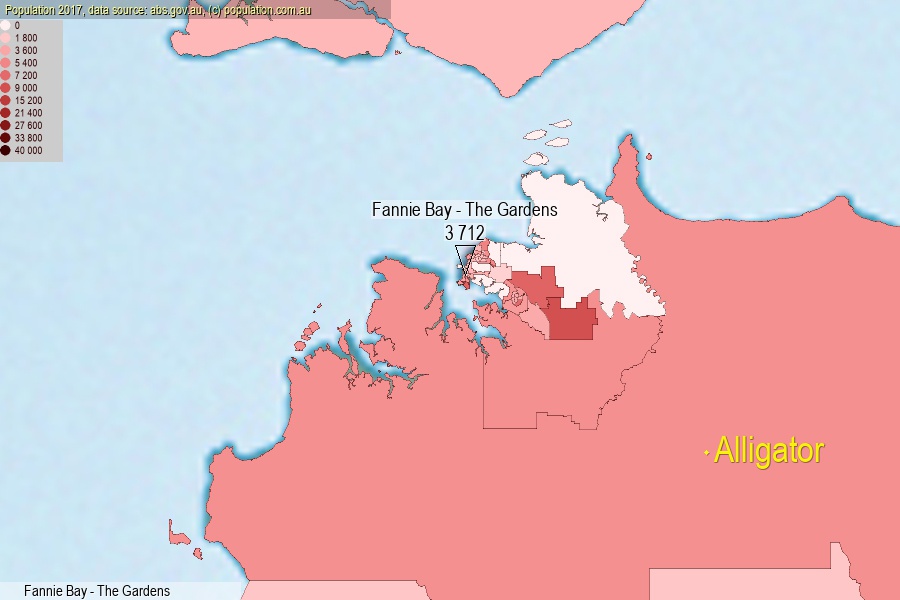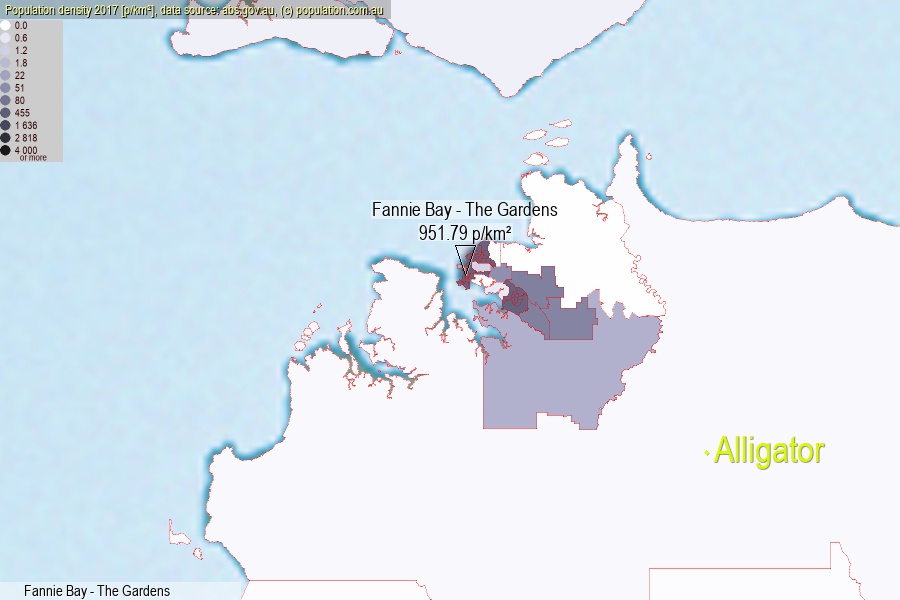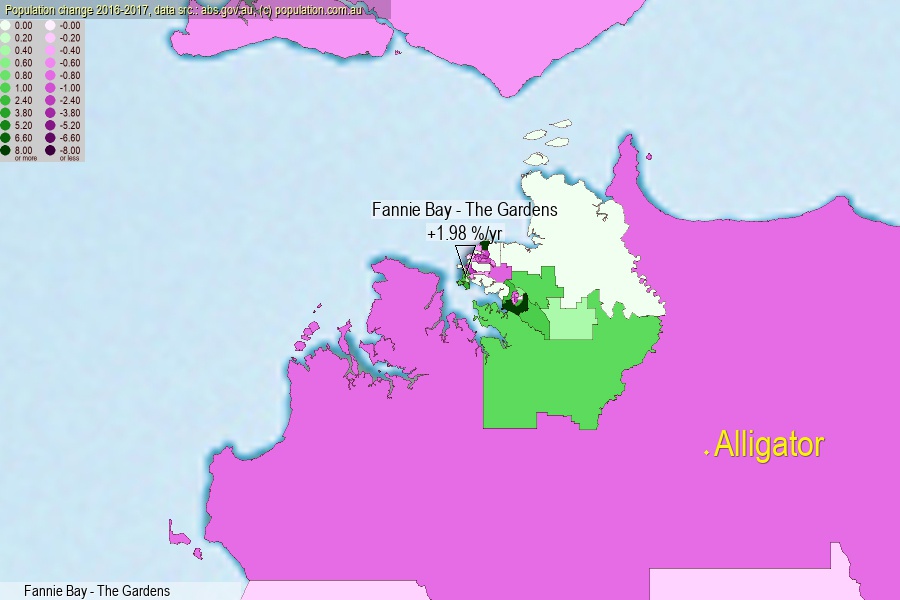 population.com.au
population.com.auLast official estimated population of Fannie Bay - The Gardens (as Statistical Area Level 2) was 3 712 people (on 2017-06-30)[2]. This was 0.01% of total Australian population and 1.505% of NT population. Area of Fannie Bay - The Gardens is 3.90 km², in this year population density was 951.79 p/km² . If population growth rate would be same as in period 2016-2017 (+1.98%/yr), Fannie Bay - The Gardens population in 2025 would be 4 342. [0]



Click to enlarge. Fannie Bay - The Gardens is located in the center of the images.
Population [people], population density [p./km²] and population change [%/year] [2]
View borders » (new window) [4]
[1991-1992] 0.00 %/Yr.
[1992-1993] +0.46 %/Yr.
[1993-1994] +0.61 %/Yr.
[1994-1995] +1.57 %/Yr.
[1995-1996] +1.46 %/Yr.
[1996-1997] +0.41 %/Yr.
[1997-1998] -0.12 %/Yr.
[1998-1999] -0.03 %/Yr.
[1999-2000] +0.38 %/Yr.
[2000-2001] -0.96 %/Yr.
[2001-2002] -0.41 %/Yr.
[2002-2003] -0.18 %/Yr.
[2003-2004] +0.09 %/Yr.
[2004-2005] +0.74 %/Yr.
[2005-2006] +0.79 %/Yr.
[2006-2007] +1.52 %/Yr.
[2007-2008] +1.12 %/Yr.
[2008-2009] +0.40 %/Yr.
[2009-2010] -0.17 %/Yr.
[2010-2011] -0.23 %/Yr.
[2011-2012] +2.50 %/Yr.
[2012-2013] +2.25 %/Yr.
[2013-2014] -0.22 %/Yr.
[2014-2015] -0.33 %/Yr.
[2015-2016] -0.74 %/Yr.
[2016-2017] +1.98 %/Yr.
[0] Calculated with linear interpolation from officially estimated population
[1] Read more about SA2 and Australian Statistical Geography Standard (ASGS) on abs.gov.au
[2] Population data from Australian Bureau of Statistics (Population and density: 2017; change: 2016-2017)
[3] Digital Boundaries: Australian Statistical Geography Standard (ASGS) 2016.
[4] Border coordinates are simplifyed using Ramer-Douglas-Peucker algorithm.